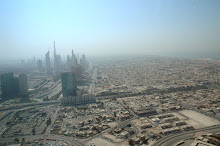Tourism in Dubai is an important part of the Dubai government's strategy to maintain the flow of foreign dollars into the emirate. Dubai's lure for tourists is based mainly on shopping, but also on its possession of other ancient and modern attractions.
Dubai is the second most populous emirate of the seven emirates of United Arab Emirates after Abu Dhabi. It is distinct from other members of the UAE in that revenues from oil account for only 3% of its gross domestic product. A majority of the emirate's revenues are from the Jebel Ali Free Zone (JAFZ) [1] and now, increasingly, from tourism.
Dubai’s location at the cross-roads of Europe, Asia and Africa makes for easy accessibility. Most capitals and other major cities have direct flights to Dubai. More than 120 airlines operate to and from Dubai International Airport to more than 260 destinations, making it one of the worlds busiest. Dubai is also the home base of Emirates Airline, international airline of the UAE, which operates scheduled services to more than 100 destinations.

.jpg)
.jpg)
.jpg)

.jpg)
.jpg)
.jpg)
.jpg)

